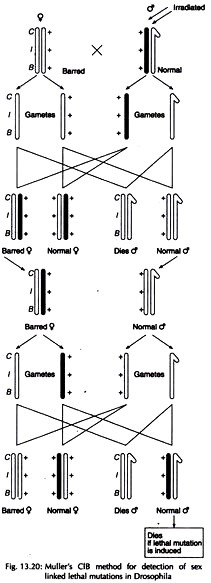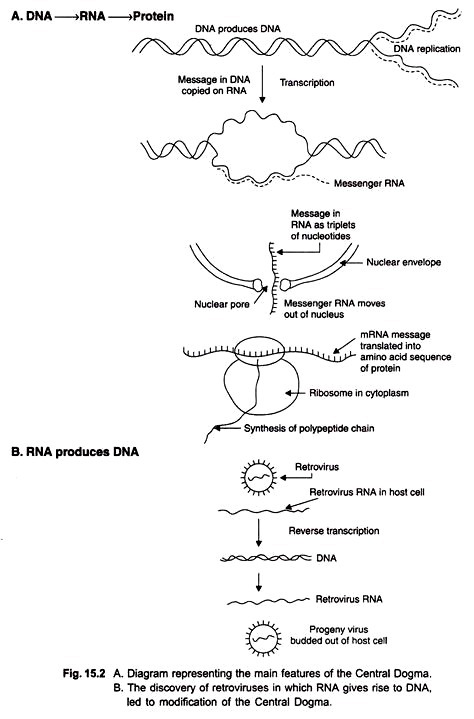ADVERTISEMENTS:
The below mentioned article provides notes on central dogma.
However, DNA itself does not directly order amino acid sequences. In 1958 Francis Crick suggested an RNA intermediate and proposed that there is a one-way sequential flow of information from DNA to RNA to protein. This relationship of information transfer between DNA and protein became the Central Dogma (meaning a set of beliefs) in molecular biology.
In the years that followed, the Central Dogma was modified when it was found that in special cases RNA can direct the synthesis of DNA; under artificial conditions single-stranded DNA can specify protein (Fig. 15.1 A, B; Fig. 15.2).
The One Gene-One Enzyme Hypothesis:
As far back as 1915, the work of Archibald Garrod on inborn errors of metabolism in man had suggested a link between a gene and its product protein. But experimental proof for Garrod’s hypothesis came almost three decades later from Beadle and Tatum’s (1941) studies on the bread mold Neurospora.
These authors analysed the biochemical effects of genes by studying wild type prototrophs (strains that grow on minimal medium) and auxotrophs (nutritional mutants that grow only on supplemented medium) of Neurospora. They first prepared mutants by UV irradiation of the normal strain. One such strain thia failed to grow on minimal medium unless thiamine was added; mutant pdx required pyridoxine for its growth.
ADVERTISEMENTS:
Experiments of Beadle and Tatum confirmed the heritable nature of the defects in the mutants. When thia is crossed to the wild type, the resulting asci contain 4 ascospores from the wild type strain and 4 from thia strain. When each of the 8 ascospores is isolated and grown on minimal medium only 4 ascospores are able to grow; the remaining 4 grow after addition of thiamine to the medium.
Beadle and Tatum could demonstrate that the UV-induced nutritional mutants in Neurospora had single gene mutations that were transmitted by Mendelian inheritance. Since each gene mutation produced a defect in a single enzyme, Beadle and Tatum proposed that one gene produces one enzyme.


